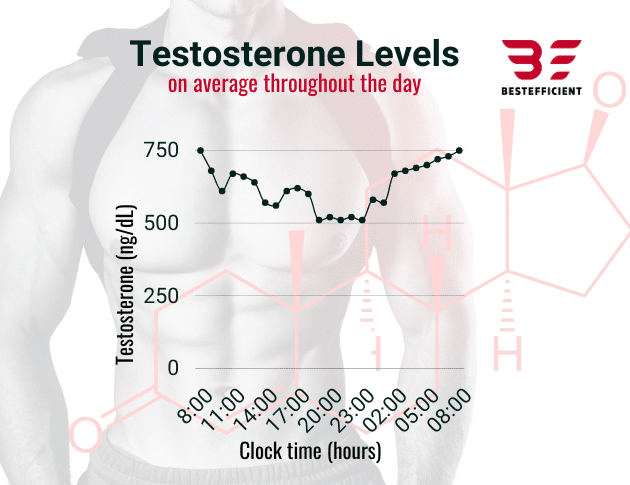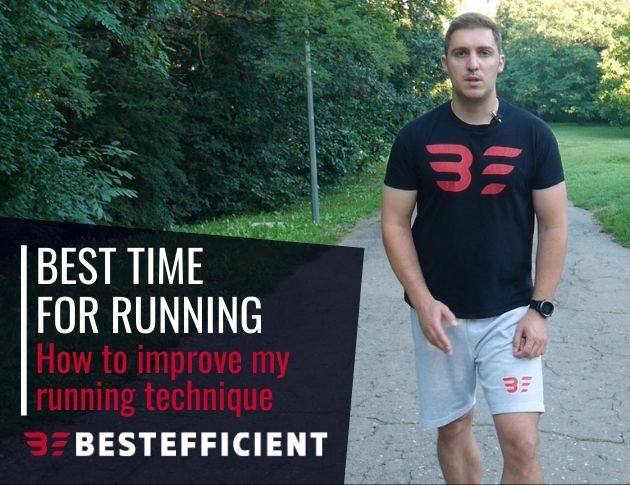When should you run, and why is it so?
Evening or morning run? Actually it has always been a matter of choice. Here is a quick checklist to makes it all clear for you – what is the best time for running. What motivates your choice to pick one option or the other. Check out our advice and decide for yourselves. Which of these fits your lifestyle, or maybe you can find another option!
What keeps you engaged?
The most important thing for any activity is staying motivated. Think of what keeps you engaged and consistent. For some people, a morning run is a way to escape from work, family or other commitments that limit them.
But let’s be realistic – not everyone is an early bird. Maybe you’re a night owl. Some people are more energized in the afternoon and evening hours, and this is when they are working better. They have time to gather strength during the day. They love to stay in bed until the last minute, they just can’t imagine running 5 or more miles in the morning. And only after that – to survive the workday. If you are a night owl, the solution is to take some time at noon and get the job done.
Essential for a good run is to know what time of the day works best for you and your energy levels. Here the reason is rather in the hormones, but I’ll explain that in another article. Your best time for running is specific and connected to your biological clock.
Best time for running based on hormone peaks
– When it comes to the best time for running performance
the timing of your workouts can have a significant impact. Hormones such as testosterone, cortisol, and melatonin can all play a role in determining the best time to run. By understanding how these hormones affect your body, you can optimize your workouts to be efficient and productive.
Testosterone, for example, is a hormone that is critical for muscle growth and development. It typically peaks in the morning, around 8:00-10:00 am, and can increase again in the late afternoon or evening. By scheduling your runs during these peaks, you can take advantage of the hormonal boost and achieve better performance.
Cortisol, on the other hand, is a hormone released in response to stress. It has its highest levels in the morning, around 7:00-8:00 am, which means that if you prefer to run in the morning, it’s best to do shorter intervals to minimize cortisol levels. Longer cardio sessions can deplete glycogen stores and trigger cortisol release, which can hinder your fitness goals.
Melatonin is a hormone that regulates sleep-wake cycles and slowly increases after the onset of darkness. While it may not play a major role in the timing of running, it’s worth considering if you have trouble sleeping after evening runs.
It’s also worth noting that there are hormones like adrenaline and endorphins which activate because of running or training, and they do not have a higher correlation in thinking of the best time to run. Ultimately, the best time for running may vary based on individual factors such as personal schedules, weather conditions, nutrition intake and individual preferences.
By taking into account the roles of hormones in running performance, you can catch the wave and achieve a more efficient and productive running session. Keep in mind that optimal timing may vary based on individual factors, so experiment to find what works best for you.
- Cortisol
Cortisol, a hormone released in response to stress, has its highest levels in the morning, around 7:00-8:00 am. If you prefer to run in the morning, it’s best to do shorter intervals rather than long steady-state cardio to minimize cortisol levels. Longer cardio sessions can deplete glycogen stores and trigger cortisol release, which can hinder your fitness goals. Save longer cardio sessions for when you have more time in the afternoon.
- Testosterone
Testosterone, a hormone that promotes muscle growth and development, has its highest peak in the morning, around 8:00-10:00 am, and can increase again in the late afternoon or evening. If your running session falls within this time window, it’s a good opportunity to do a challenging workout and take advantage of the hormonal boost. If you also do strength training, consider doing it during the morning testosterone peak and running afterward or later in the day.
Keep in mind that the optimal timing of running in relation to testosterone levels may depend on individual factors, so experiment to find what works best for you.

- Melatonin
Melatonin, a hormone that regulates sleep-wake cycles, slowly increases after the onset of darkness and typically peaks between 2:00-4:00am before gradually declining. While melatonin levels may not play a major role in the timing of running, it’s worth considering if you have trouble sleeping after evening runs. If you prefer to run in the evening, try to finish before melatonin levels begin to rise too much.
Remember that the best time for running may vary based on individual factors such as personal schedules, weather conditions, and individual preferences. Overall, there are many factors to consider when determining the best time for running. By taking into account hormone peaks and other individual factors, you can optimize your workouts and achieve your fitness goals.
Best time for running in terms of strength training
If you’re new to fitness and strength training, it’s important to understand that endurance and stamina take time to build. As a beginner, it may not be the best use of your time to do a long run before strength training, as you may lack the endurance needed for a quality workout. Instead, it may be more effective to do cardio on a separate day or incorporate an aerobic workout into your strength training routine.
In this article, we will explore the best time for running/cardio in terms of strength training and how it can benefit you, whether you’re a beginner or an experienced athlete. One way or another it’s always a good choice to consult with your personal trainer.
- Doing cardio before strength training
If your goal is to burn fat, get lean, and lose weight, doing cardio before strength training may be the best approach. Research has shown that doing cardio before strength training can lead to a greater reduction in body fat percentage than doing strength training alone. Additionally, it can help to warm up the body and prepare it for the more intense strength training session that follows.
- Doing cardio after strength training
On the other hand, if you want to gain muscle and use cardio to complement your strength efforts, it’s best to do cardio after strength training. This approach can help reduce muscle soreness, prevent harder muscle strain, and provide a better environment for muscle growth. Research has also shown that doing cardio after strength training can lead to increased muscle protein synthesis, which is essential for building and repairing muscles.
Overall, the best time for running/cardio in terms of strength training depends on your fitness goals and individual preferences. By taking into account the benefits of doing cardio before or after strength training, you can optimize your workouts and achieve your fitness goals more efficiently.
How busy is your day?
“When you get tired, learn to rest, not to quit”
Evening runs put you at risk of exhaustion and thus it becomes difficult to achieve effective results.
There may come a time when you might want to stop, just quit everything and go to bed. This happens if you have a busy day. And the biggest problem with the night runs is the overall fatigue that you experience, especially if you’re working long hours in a standing position!
Morning activity has an advantage here. It allows you to recover by the end of the day with nutrition, and hydration, stretching, even a massage, perhaps. Synovial fluid levels are higher in the morning, so it “softens” more your joints and knees. This liquid level is related to the function of your joints and its effect gets weaker during the day and under the pressure of your body weight.
The weather conditions are strongly related to your best time for running?
In general, running is an outdoor activity that is strongly related to your perception of the weather conditions.
For a long night run, it is important to know that there is quite a difference in your temperature adjustment as opposed to running during the day. Usually, for a day run, you need to dress with one layer of clothes and you may rest assured that it will be fine. A night run is just the opposite. You need to start warmed-up already and bring a light vest or blouse if it gets even cooler. In both cases, get ready for the activity and choose the right outfit.
The Best Time for Running and your nutrition plan?
A big challenge ahead of you in a morning run is the lack of time to eat healthy before you go.
If you do a long morning run, it is preferable to eat before that. You probably won’t eat until lunch – thus you will have more than a 12-hour gap from your last meal. Some people prefer to eat heavy before bedtime and then not have a breakfast, which at some point becomes a problem, others eat a snack before the morning workout and then get a healthful lunch (this is what we recommend).
Alone or in a company.
Either one has pros and cons. On the one hand, running in a company could help you do more than you can. On the other hand, it could ruin your activities. If you run in a company, better every one of you knows what he/she is looking for and be cool with it. Is it a run for a chat or are you both aiming at something more? Distractions that lead to someone skipping or cheating on the plan are all over the place.
A hint: Set team goals and follow them strictly.
There’s another option for you if you have a dog – is there a better company for running than a man’s best friend?
Lone rangers, imagine the following:
Suddenly you find yourself in a deserted place, you see a suspicious persona or something, you freak out and run in a sprint until you reach a safe place. Yes, this will force you to run more and faster than you can, but then again: didn’t you go out for a marathon? See you should have taken some company.
Seriously though, running outdoors alone or in a team, we strongly recommend choosing well-lighted routes and – and if you are running during a limited daylight period – be it very early morning or late night – do carry proper equipment so that drivers can see you clearly.
The Best Time For Running – Winter Bonus:
If you are not a lone-run-fan or the neighborhood you live in isn’t suitable – do as most people do. Use the treadmill at the gym. In this scenario, neither the fall rains or winter chills, nor the serial killers in the dark park alley will affect your getting in good shape. Running on the treadmill in the gym is still running, it does the same job for you. So just do it!


